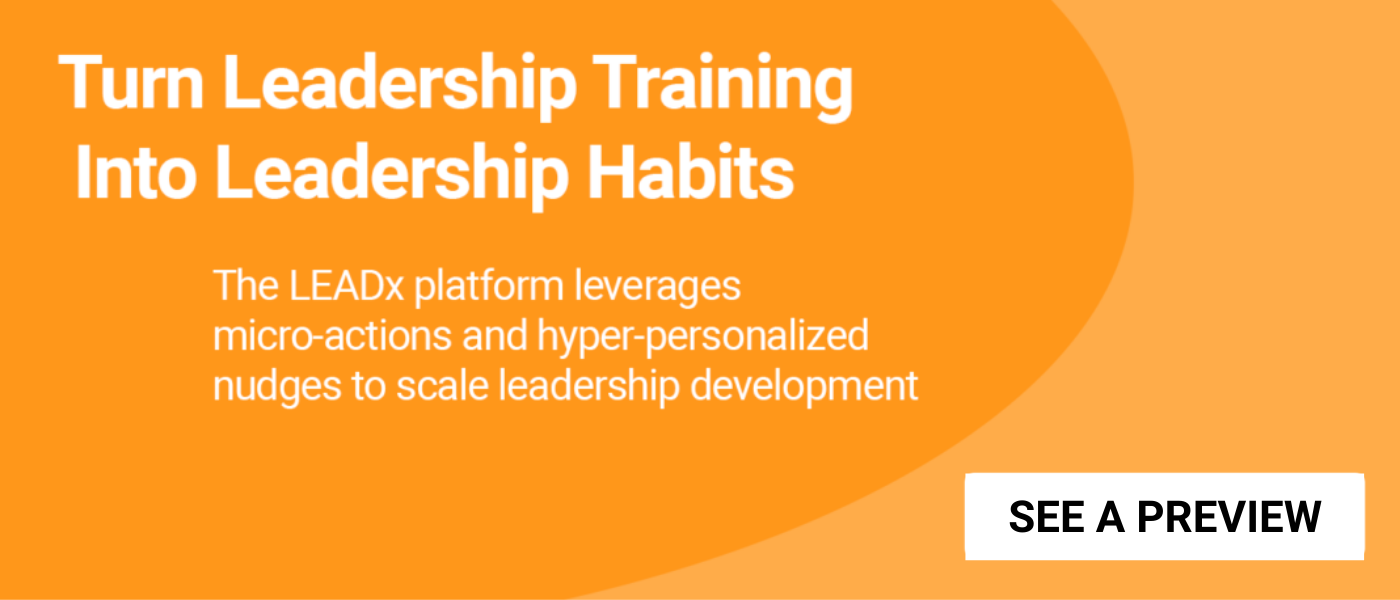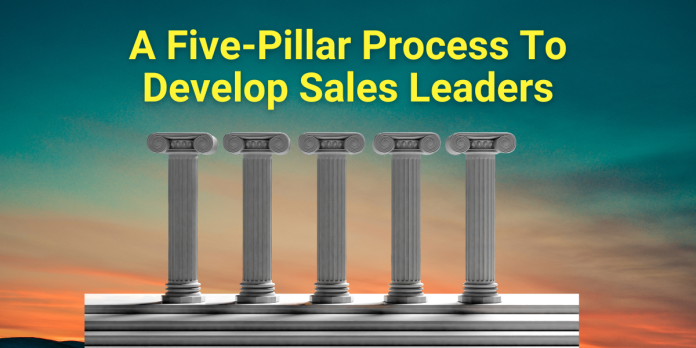
Sales leaders are the lever for a high-performing sales organization. One study cited in the Harvard Business Review found that 69% of sales reps who exceeded quota rated their managers highly. The same study showed that just 3% of reps who gave their leaders low ratings then turned around and gave their organization a high rating. In other words, how a rep views their leader is how they view the organization.
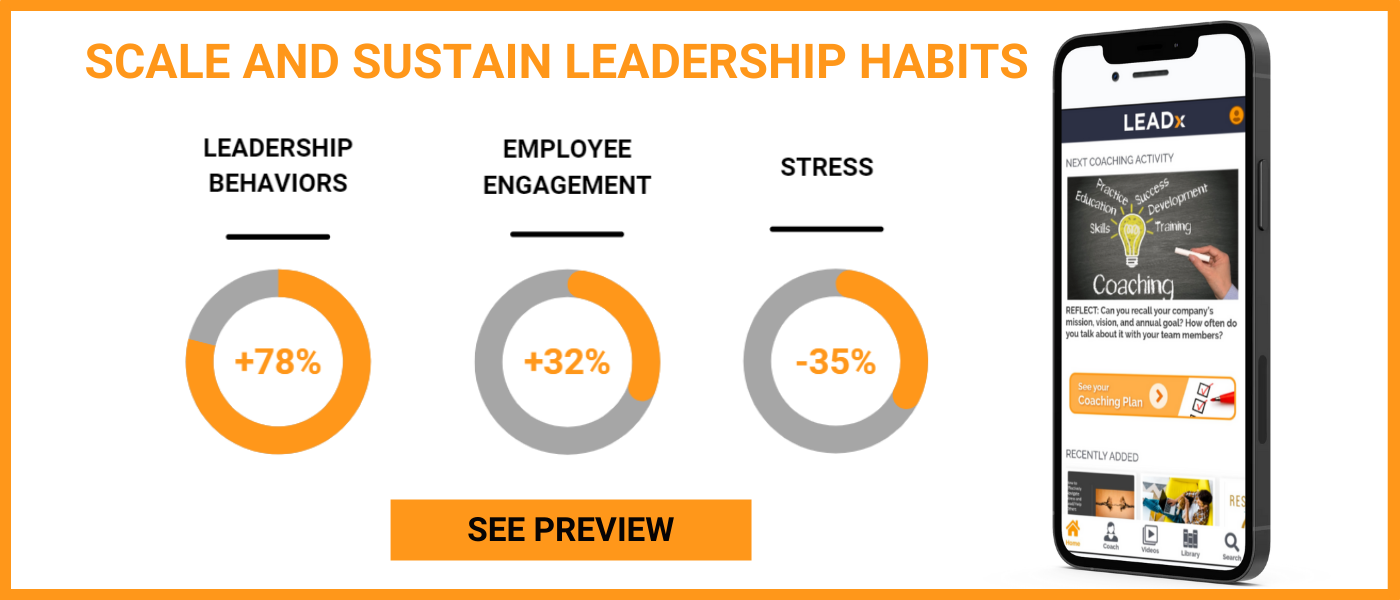 Despite all signs pointing to sales leadership as mission-critical, most organizations fall short. They don’t offer enough leadership development, or if they do, it doesn’t drive enough impact.
Despite all signs pointing to sales leadership as mission-critical, most organizations fall short. They don’t offer enough leadership development, or if they do, it doesn’t drive enough impact.
For a best-in-class example, I had the opportunity to connect with the field leader development team (FLD), that is part of US Commercial Learning & Development at Takeda Pharmaceuticals—Scott Tinkel, Director, FLD, and Craig Neverosky, Associate Director, FLD. Tinkel and Neverosky just concluded their year-long program for first-line sales leaders, called Level Up.
Level Up was developed to meet a few key needs. First, the FLD Team understood that by investing in the development of in-role sales leaders you elevate the capabilities of the leader. This, in turn, impacts the sales team’s performance. Second, Level Up met the needs of a specific group of leaders at Takeda: First-line Field Leaders who were established in their roles and aspired to develop and take on more responsibility. Lastly, Takeda wanted a program that would bring leaders from 15 different sales teams together while also offering individualized learning delivered just in time and in the flow of work.
At the program’s end, 83% of leaders already showed significant improvement in leadership performance. Qualitative feedback from supervisors indicates improvement in self-awareness, confidence, strategic thinking, communication skills, and more.
Tinkel and Neverosky attribute their success to five main pillars.
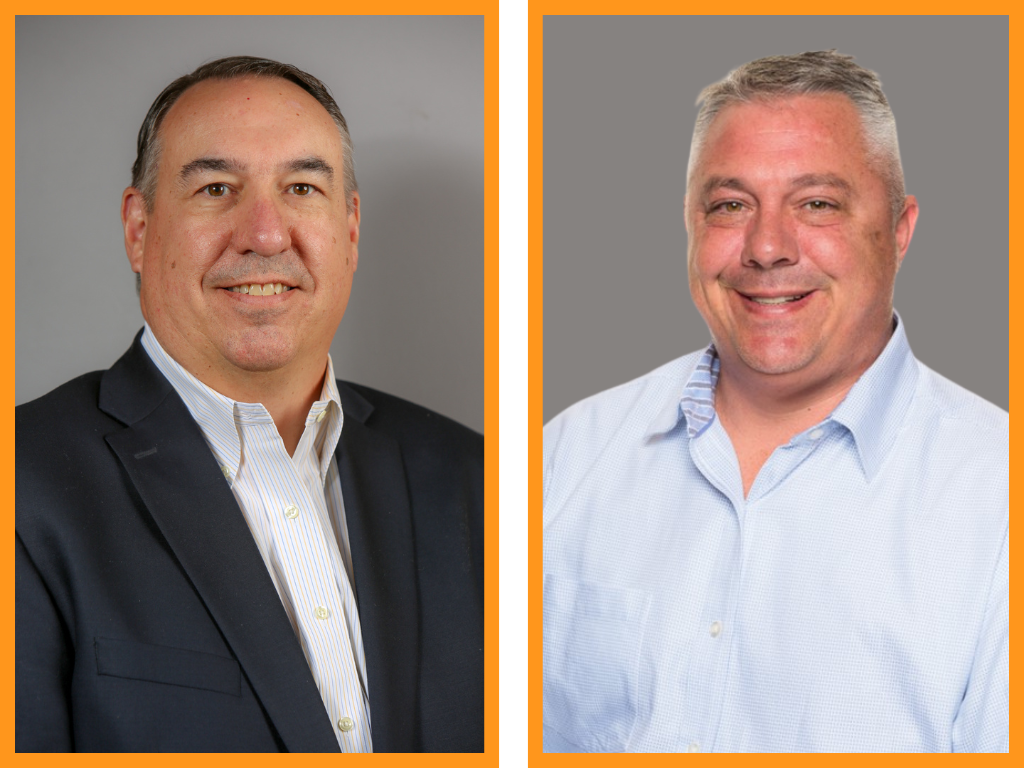
Pillar 1: Assess Your Core Leadership Competencies
Based on Takeda’s existing first-line sales leader competency model, Tinkel and Neverosky worked with Vaya Group™ to develop a custom 360 assessment. This 360 helped establish a benchmark of strengths and areas for improvement. High level, the assessment measured each leader’s ability to :
- Cultivate Talent
- Navigate Change
- Engage Teams
- Deliver Results
The assessment and results then set the stage for the Level Up program. Participants entered the program with a data-backed benchmark of their skills.
Pillar 2: Design Your Learning Journey Based on Your Core Competencies
Takeda created a ten-month developmental program covering the following core competencies:
- Strategic Focus
- Adaptability, Self-Awareness, and Persuasion/Influence
- Enterprise-Thinking, Executive Presence, and Communications
The program leverages a combination of live learning bursts, monthly group coaching sessions, and weekly micro-learning activities to drive retention and enable real-time application of new skills.
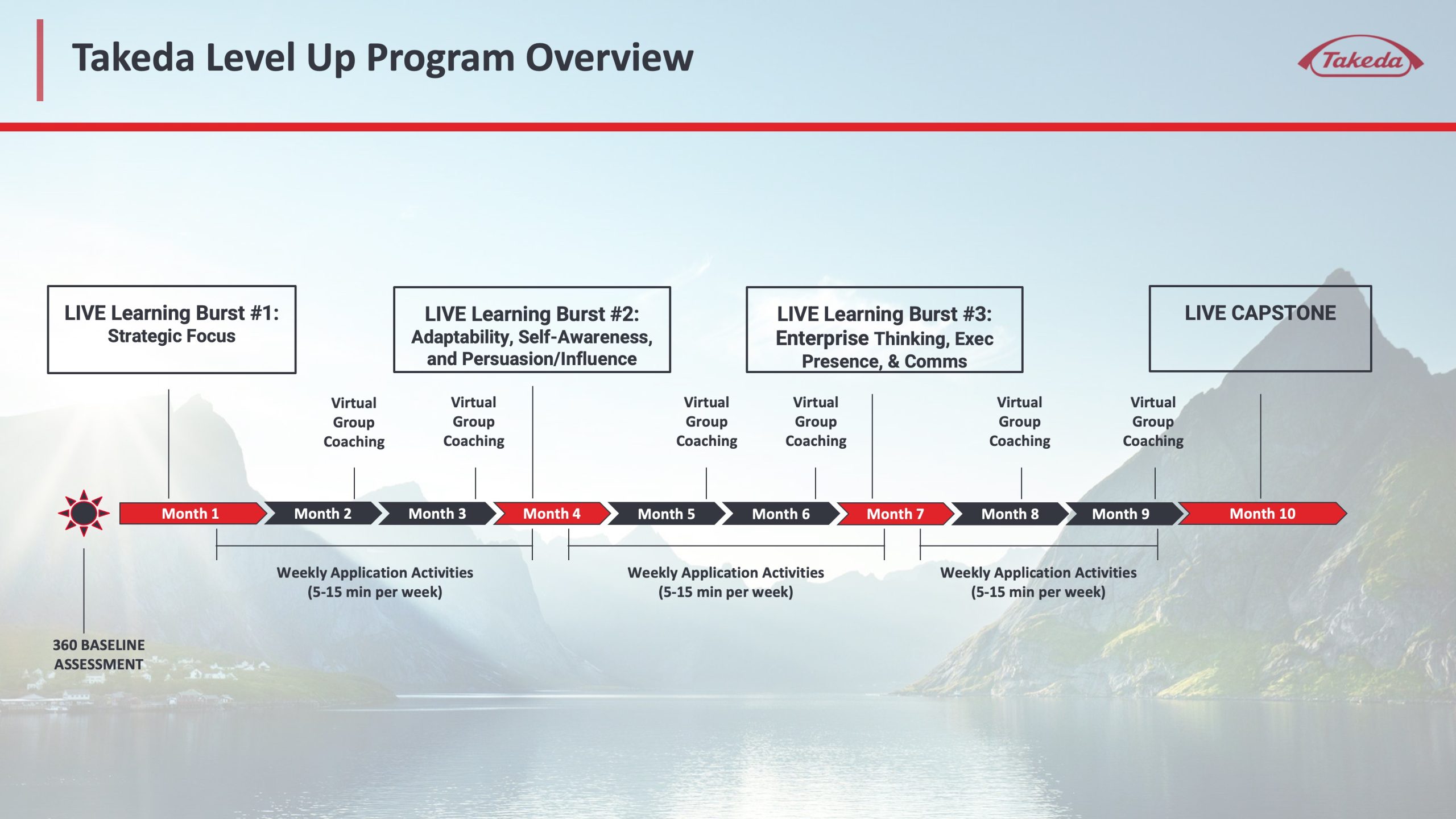
Pillar 3: Deliver In-Person, Experiential Learning Bursts
The FLD Team was intentional with creating a learning eco-system with three Learning Bursts and the Capstone session that would drive engagement, increase retention, and expand thinking. Each Learning Burst delivered an intensive, application-focused workshop component that focused on the capability being highlighted. Another critical component behind the Learning Burst days is learning from others (Social Learning). This includes peer-to-peer learning, best practice sharing, and networking. At each learning burst, a Takeda senior leader would be a guest presenter to share business context, their own career and development journey, and real-life examples of the highlighted capability in action. The FLD Team also included regular networking events with Takeda leaders as part of the learning bursts.
“I was incredibly impressed with the level of conversation that the participants were having in this strategic focus session,” Tinkel said, referencing the workshop for Strategic Focus. And Tinkel was still impressed by participants’ transformation months later. “The level of conversation three months after our workshop on strategic focus blew me away,” he added.
As an example of a live learning burst, here is a breakdown of the Strategic Focus day and what it entailed:
- Strategic Mindset Self-assessment – Sales leaders each took a quick self-assessment to help them reflect on their strategic mindset and establish a baseline for their abilities, strengths, and areas for improvement.
- Introduction to Strategic Focus – The facilitator laid the foundation around what strategic focus is and why it’s important.
- Video + Large Group Debrief – 4 Ways to Improve Your Strategic Thinking.
- Knowing Your Industry Group Exercise – Groups prepared and presented strategic summaries.
- Critical Inquiry and Asking Strategic Questions – The focus then shifted to asking strategic questions. Participants received a questions worksheet to use on the job.
- A Senior Business Leader at Takeda Presented on Strategic Thinking – This helped bring the concepts to life at Takeda. In response, sales leaders formulated and asked strategic questions.
- Strategic Communication – Lastly, participants learned what strategic communication is, learned how to communicate strategically, and then practiced in small groups.
Pillar 4: Let the 3-to-1 Model Guide Your Pull-Through
So many otherwise great programs fail at the same juncture: The knowing-doing gap. Even after a highly engaging workshop, participants get busy. They forget to apply what they learned for a week. Then two weeks. Before you know it, the vast majority of learning becomes “throwaway training.”
The 3-to-1 model helps interrupt this problem to make learning stick. The 3-to-1 model says that for each skill learned, you should design and deliver at least three follow-through activities or on-the-job exercises. For example, if you are training effective feedback your “curriculum” would become an action learning journey like:
- Week 1: Live workshop to learn and practice an effective feedback framework. For example, a facilitator could teach the B.I.G. model of feedback (Behavior, Impact, Get Agreement).
- Week 2: Participants would ask their team members to give them feedback (supporting materials could include model emails, discussion guides, a job aid on how to receive feedback)
- Week 3: Participants would give their team members feedback – but only positive feedback.
- Week 4: Participants would give constructive feedback as appropriate. If they see something, they’ll say something.
The 3-to-1 model became Takeda’s guiding principle for each skill trained. For example, after the Adaptability workshop in May, leaders would cover core skills like adaptability, self-awareness, and persuasion at a monthly cadence. Each month would replicate the 3-to-1 model, capped with a virtual group coaching session.
Pillar 5: Deploy Tech to Reach Busy Managers in the Flow of Work
Essential to making the 3-to-1 model work for this busy sales leader audience is the thoughtful use of technology. The digital platform that Takeda leveraged included three important components.
First, AI-powered, personalized nudges drove learner engagement. Nudges are quick prompts that draw on behavioral science to engage learners and incite practice. Each leader received a weekly cadence of hyper-personalized nudges. Based on the topics they were learning, the nudges would reinforce key insights, get leaders to practice, and facilitate on-the-job application.
Second, the FLD Team ensured sales leaders had additional access to expert coaches by running monthly group coaching sessions. Delivered virtually, one-hour group coaching sessions brought the cohort of leaders together to reinforce key concepts, share experiences, ask questions, work through challenges, and practice together. These monthly checkpoints also helped keep leaders on track with their practice.
Finally, they allowed participants to have daily access to an expert coach through an online platform called LiveCoach. With LiveCoach, sales leaders could send messages to an ICF-certified coach at any time. This enabled participants to ask questions, get support, and even role-play challenging scenarios at exactly the moment they needed it.
The Results: Measurable Improvement in Leadership Performance
By the end of the program, 83% of leaders already showed significant improvement in leadership performance. The Net Promoter Score of Level Up was 88 for participants and 100 for participants’ managers. Qualitative feedback from supervisors indicates improvement in self-awareness, confidence, strategic thinking, communication skills, and more. Here are a few examples of feedback participants received from their supervisors after the program:
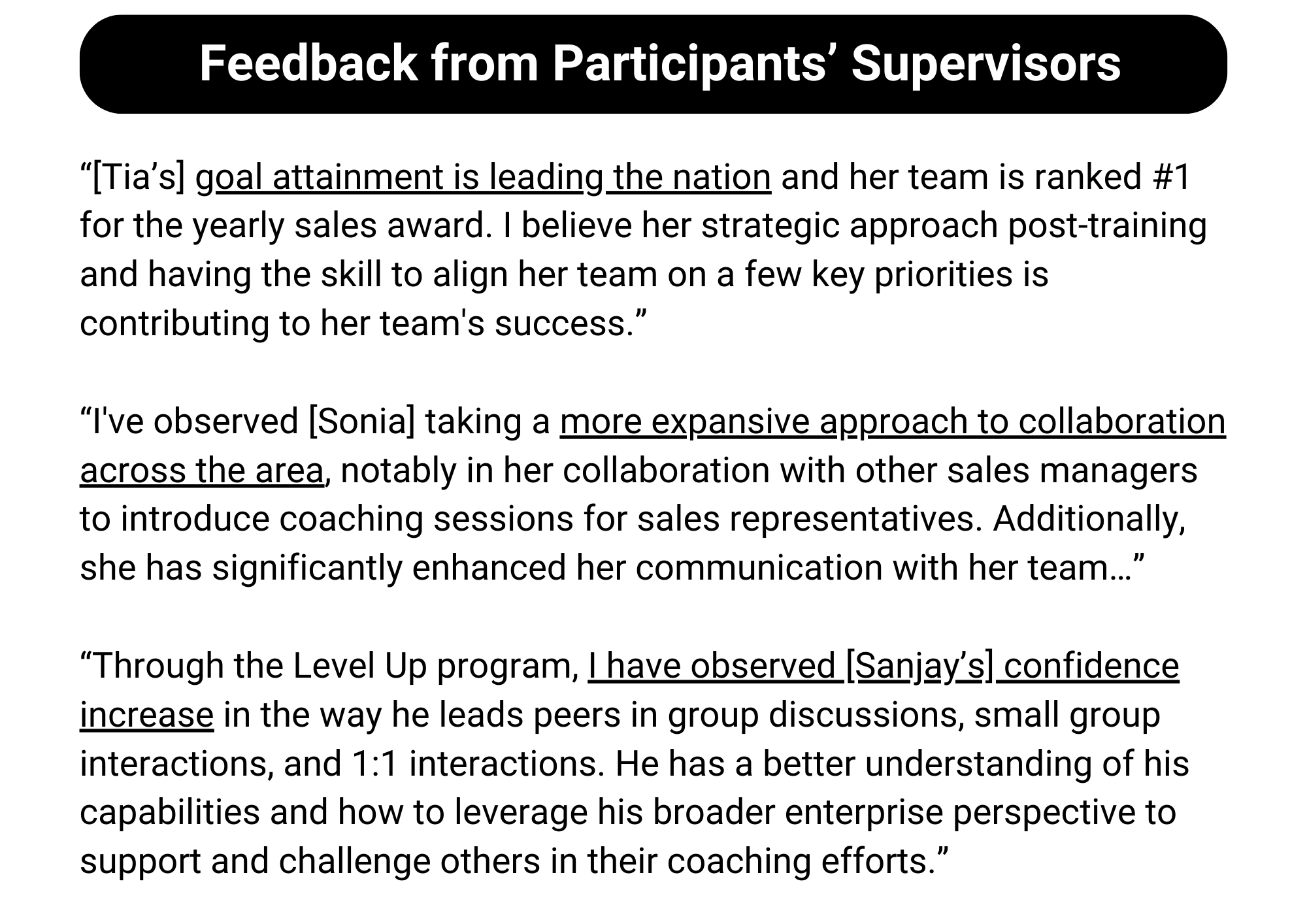
When it comes to using tech for pull-through, the average participant received 127 personalized nudges by email, opened the behavior change platform 32 times, and engaged with 10 lessons.
The Takeaway: Tech Democratizes Your Ability to Drive Behavior Change
As technology improves, you can see a clear shift in leadership development. By combining thoughtful measurement, in-person training, and digital follow-through, you can create a high-touch, in-depth program—one that mimics the executive-level approach of weekly one-on-one coaching. And you can do so in a way that scales to first-line leaders.


